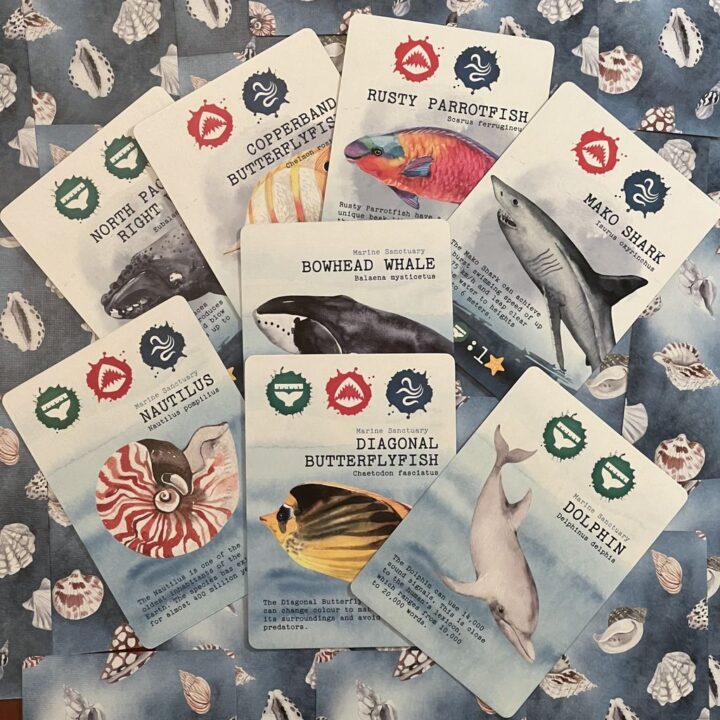Ahoy, board game fans! Welcome to my review of Pacific Ocean, a game that takes you on a sea-faring adventure like no other. I’ll share my thoughts on its mechanics, balance, and the luck factor. Let’s also explore the player interaction, strategy, and the stunning theme and artwork. Finally, we’ll dive into (oops, I said it!) its replay value and components. Grab your life vest, and let’s set sail!
How It Plays
Setting Up
First, lay the board open, and shuffle the deck of cards. Each player picks a color and gets a boat and starting resources. Don’t forget to place the fish tokens in their designated spots. Now, you’re ready to set sail!
Gameplay
Players take turns navigating their boats across the Pacific Ocean. During a turn, you draw a card, which may reveal weather, treasures, or challenges. The objective is to catch fish and collect treasures while avoiding storms and pirates. Strategy comes into play as you decide your path and choose your actions wisely.
Winning the Game
The game ends once a player has collected five different treasures or successfully transported a school of fish back to their harbor. Players tally their points based on their treasures, fish, and completed secret goals. The one with the highest score becomes the Pacific Ocean champion!
Want to know more? Read our extensive strategy guide for Pacific Ocean.
Game Mechanics and Balance in the Pacific Ocean Board Game
Ah, the Pacific Ocean. Not just a massive body of saltwater, but also a board game that has taken my weekends by storm! When my friends and I set sail in this game, we noticed something important: how game mechanics and balance can make or break the experience.
First, let’s talk about the mechanics. This game has a beautiful, flowing system where players navigate ships, trade goods, and engage in naval battles. Oh, and there was this time when I thought I was an invincible sea captain! Spoiler alert: I was not. Here’s where it gets interesting. The game offers a mix of strategy and chance, allowing players to make decisions but also leaving some outcomes to the roll of a dice. Unfortunately, this element of chance can lead to some unfair scenarios, like when my friend Dave outpaced us all because of pure luck. As much as I like Dave, it miffed me a bit!
When it comes to balance, the game holds up reasonably well. Each player starts on equal footing, but the random events can feel unbalanced at times. It’s like the game says, “Hope you’re feeling lucky today!” and I’m left thinking, “Not really, thanks.” This aspect limits the game to a 3 out of 5 stars for me. But hey, it’s still a good time, and there’s plenty to explore within its depths.
While the unpredictability can be both thrilling and frustrating, it’s time to explore the next chapter in our maritime adventure: Player Interaction and Strategy. Buckle up, it’s gonna be a bumpy ride through the waves!

Player Interaction and Strategy in Pacific Ocean
Imagine this: You’re at the kitchen table with your mates, snacks spread out like a buffet, and you’re about to sail the Pacific Ocean. But here’s the twist – you’re not just on a leisurely cruise. This game is all about who outsmarts whom!
The interaction in Pacific Ocean keeps everyone on their toes. Nobody likes those games where you wait forever for your turn, right? But here, things zip along as players trade, negotiate, and occasionally toss a little sabotage into the mix. It’s like a family dinner where everyone’s trying to grab the last piece of cake.
Strategically speaking, this game is a bit of a brain teaser. You can’t just coast on Lady Luck’s back. Nope, you need a plan. Whether it’s forming alliances or plotting a sneaky move to snatch victory, every decision feels impactful. It’s the kind of game where you’ll be pondering your next step even as you’re brushing your teeth at night.
And speaking of impacting, the way you interact with other players can truly make or break your chances of winning. It’s not just about laying down the best cards; it’s a sneaky dance of alliances and rivalries. Every turn feels like a chess move in an oceanic setting.
So, if your crew thrives on scheming and outwitting one another, this game will spark some serious laughs and a few dramatic eye-rolls.
Ready to get artsy with the Pacific Ocean? Stay tuned for the next section on Theme and Artwork, where things get visually splashy!
The Theme and Artwork of Pacific Ocean: A Visual Voyage
Alright, folks, buckle up your life jackets and grab a paddle – we’re setting sail into the world of Pacific Ocean‘s theme and artwork. If you’ve ever dreamt of being Captain Jack Sparrow or just love the idea of not showering for days while yelling ‘Land ahoy!’, this game might just tickle your fancy.
The game does an impressive job of bringing the vastness of the ocean to your gaming table. It’s like a splash of salty air and adventure rolled into one shiny, colorful package. The artwork is reminiscent of a sunny day at sea, without the sand getting in awkward places. The board itself is a vibrant tile of blues and greens, almost daring you to become a master navigator of the high seas. Just watch out for those pesky sea monsters!
The vivid illustrations on the cards and tiles are no less than watercolor dreams. They capture everything from majestic whales to mysterious islands, making me want to quit my day job and become a pirate. Trust me, if the ocean ever looked this good, I’d be living in a boat right now.
While the game doesn’t summon Poseidon himself to your living room, the theme is captivating and marries well with the gameplay. It’s not overly complex, nor will it make you feel like you’re stuck in a never-ending maritime museum tour. But it’s enjoyable enough to make you feel like you’re on your own seafaring adventure each time you play.
In the next section, we will explore the Replay Value and Components. Let’s see if Pacific Ocean can ride the waves over and over again without making us seasick!
Replay Value and Components of Pacific Ocean
Ah, the elusive treasure chest in board games: replay value. When I gathered my friends to play Pacific Ocean, I was wondering if it would be a repeat offender in our game nights or a one-trick seahorse. Well, folks, I’m happy to report that Pacific Ocean has replay potential. Every game night feels like jumping into uncharted waters. The strategies you use today might need some reef maintenance tomorrow!
The game offers a range of strategies that keep players coming back for more. With different routes to victory, you can try finding the balance between trade and exploration or just flip a coin and hope for the best! I kid, I kid. But seriously, a game that allows for different approaches is a keeper in my book.
Now, let’s talk components. When you open the Pacific Ocean box, you’re greeted by an assortment of well-crafted pieces. The tiles are thick and durable, and the wooden ships are cute enough that I thought about naming them. But I refrained, remembering that I’m a respectable adult. The rulebook, however, could use a little extra love. It’s like a treasure map that sometimes leads you to the wrong island.
While Pacific Ocean isn’t without its minor flaws, its components and replay value make it a solid addition to any board game collection. To put it simply: I recommend this game for those who love strategic depth. So, grab your crew, set sail, and see what adventures the Pacific holds!
Conclusion
After many evenings with ‘Pacific Ocean’, I’ve realized that this game balances challenges well, despite some luck. The theme and artwork will draw you in, while the strategic depth keeps the brain ticking. A few unfair mechanics may surface, but it’s worth it for the experience. Ideal if you enjoy strategy over chance, and you can live with the odd hiccup. This wraps up our review, folks!


